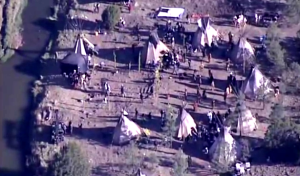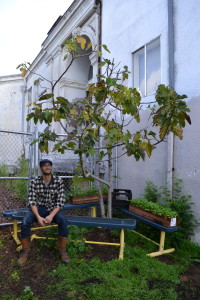Yom Kippur at the Lincoln Memorial
YOM KIPPUR Day of Atonement/ At-Onement Lincoln Memorial, Washington, DC September 22-23, 2015 Sundown to Sundown For more information, and to RSVP, please visit the Facebook event page: Yom Kippur 2015 at the Lincoln Memorial Kol Nidre 6:30pm to 8:30pm Morning Service with Yizkor 10am to 1:30pm Minchah/Neilah 5:00pm to 7:45 pm, concluding with shofar blasts followed by a multi-faith vigil Yom Kippur is the holiest day in the Jewish calendar, a fast day for seeking both Atonement and At-Onement. At this moment in history, we humans are in need of atonement for the ways in which we have desecrated the Earth; this desecration is the result of our lack of at-Onement – our separation from one another, from all living beings, and from the Earth. This year, Yom Kippur falls immediately prior to Pope Francis’s unprecedented address on September 24 to a joint session of Congress. We offer this Yom Kippur service as an invitation to the Jewish community, along with people of all faiths, to come together, acknowledging our profound need for interconnection and atonement. This service will be part of a series of faith-based events planned for the week of September 24 in support of Pope Francis. Why the Lincoln Memorial? The Lincoln Memorial is the pre-eminent American symbol of our collective responsibility to work for freedom and democracy for all people with “malice toward none, and charity for all.” It is where millions of Americans have gathered to stand for the dignity of each person. A Contemplative, Inspired Yom Kippur Service We will draw from the traditional liturgy of Yom Kippur and will also include chanting, contemplative practices, and opportunities for reflection and sharing. Words from Pope Francis’ Encyclical will be interwoven throughout the day, and faith leaders from other traditions will also offer reflections. This invitation to all people of faith is an acknowledgement that our world view is not particular to Judaism, or to Catholicism, or to any one tradition; and rather, together we will engage our hearts and spirits for this sacred moment in time. Please be aware: Yom Kippur is a day of fasting and we prefer that you not bring food or drink with you. If you need to eat or drink for health reasons during the service, please use discretion and step away from the congregation while eating or drinking. Many worshipers will wear white clothing to signify our intention to purify our souls and our lives. You are encouraged to: Invite friends, family and colleagues who may want to join us for any part of the Yom Kippur services. Bring a chair or a cushion to sit on. Wednesday night around 7:45PM: Conclusion of the Service Yom Kippur services will conclude when three stars appear in the sky on Wednesday night, a fitting affirmation of our interconnection with the movement of the universe. We will then join with the Franciscan Action Network and others for a multi-faith vigil in preparation for the Pope’s address. We will break our fast with people of faith who have been fasting for as long as ten days near the White House calling attention to the need for action the sake of life on Earth. Sponsored by the Shalom Center, in partnership with IMAC and MAC RSVP at the Facebook event page: Yom Kippur 2015 at the Lincoln Memorial




